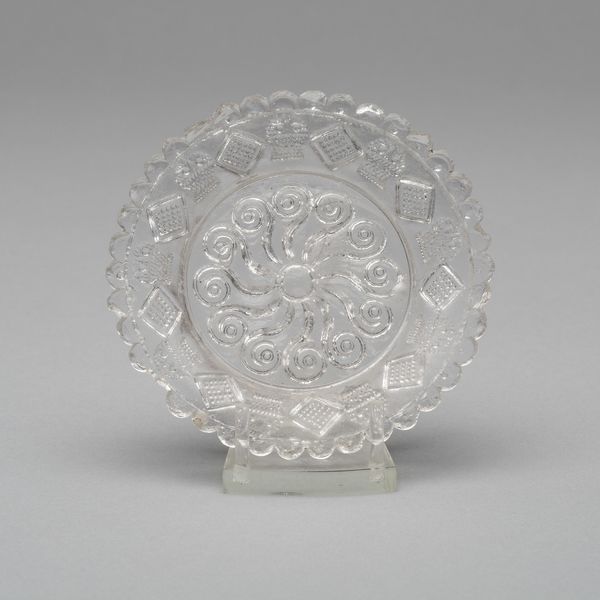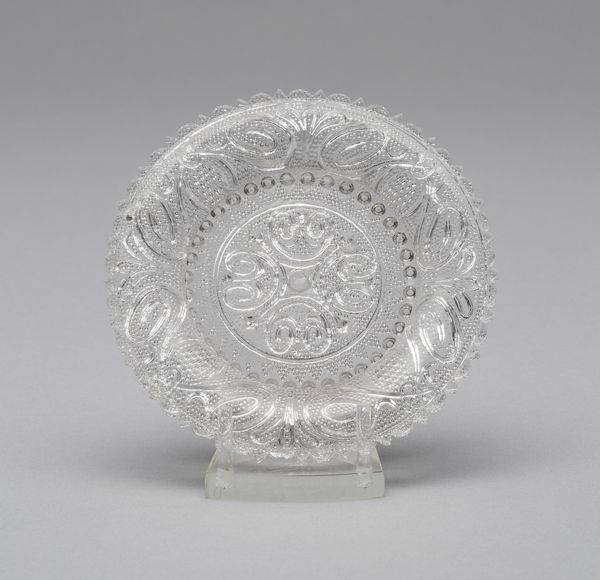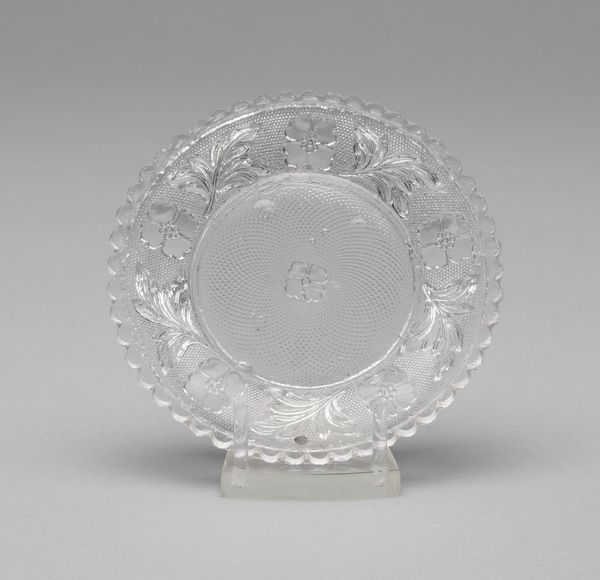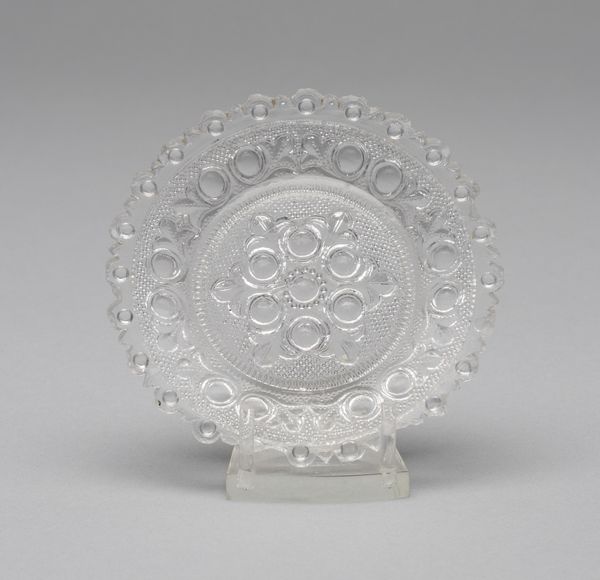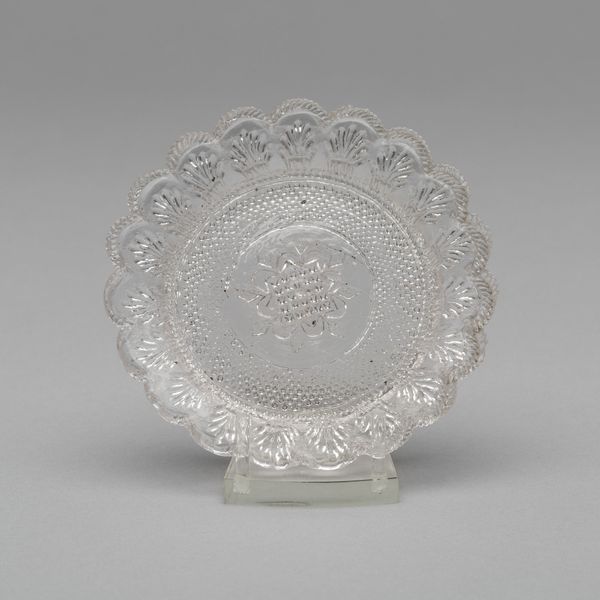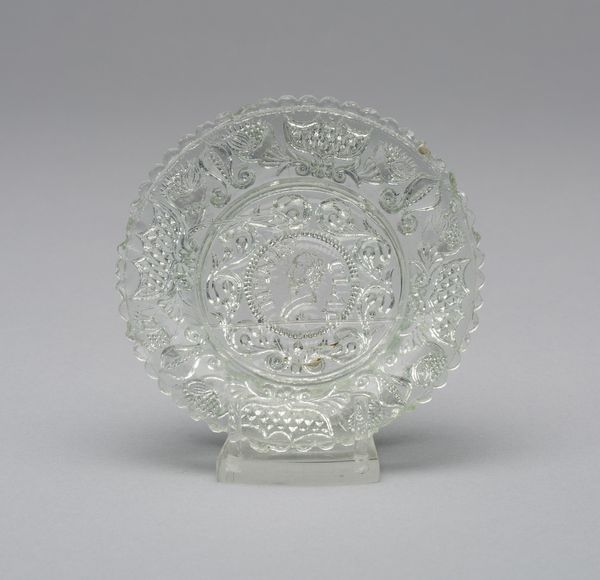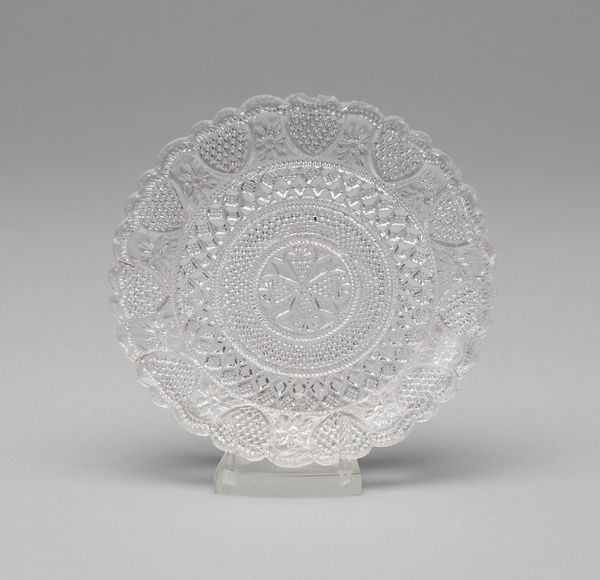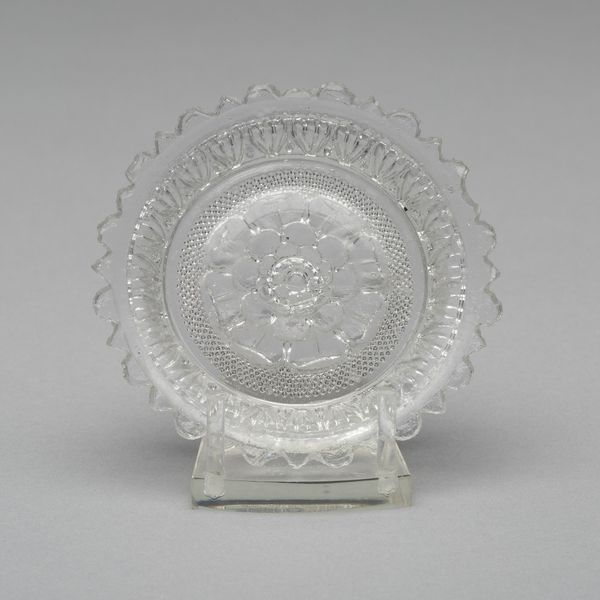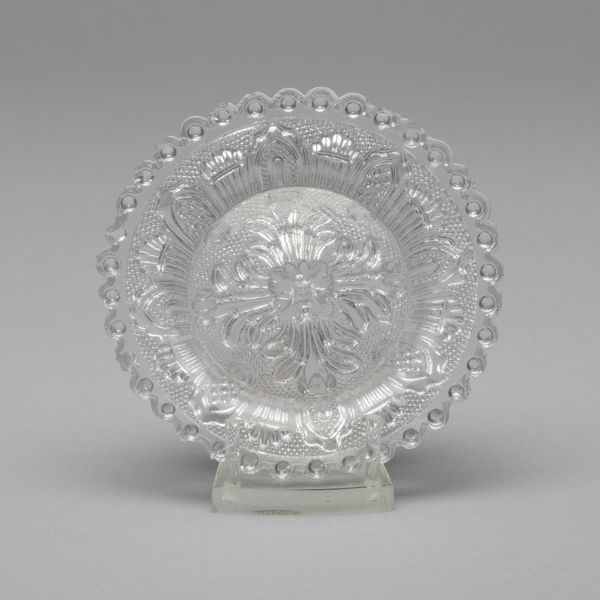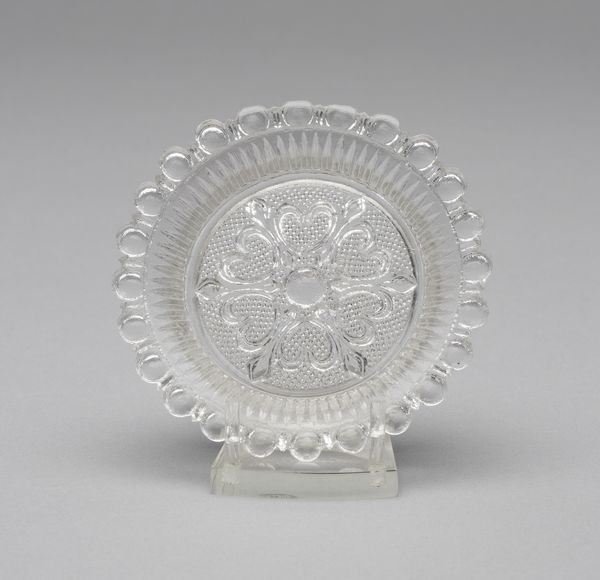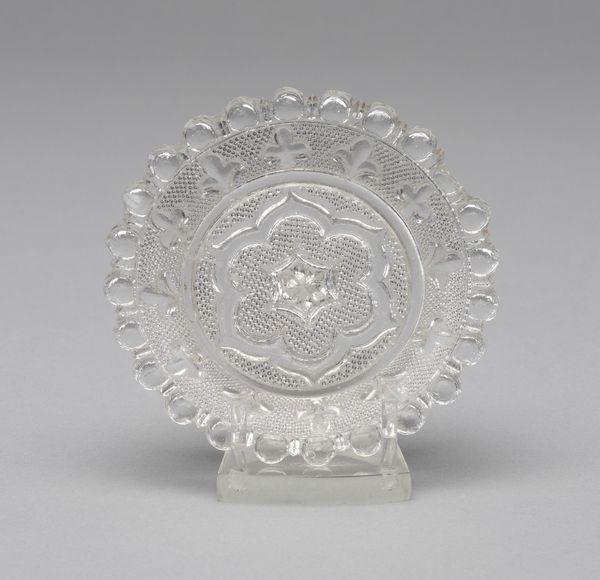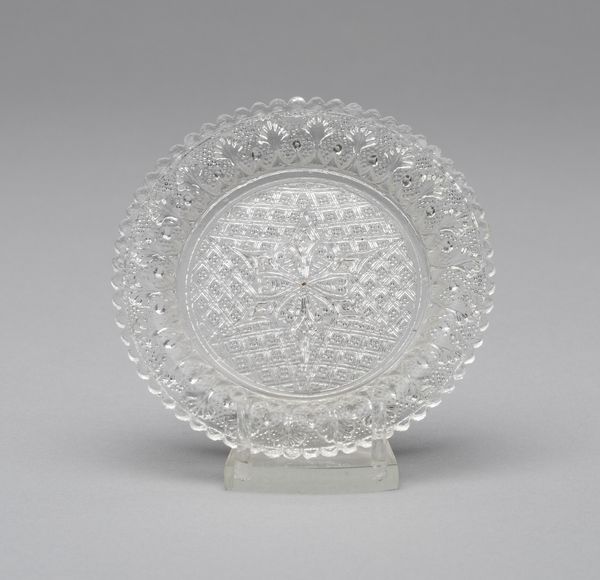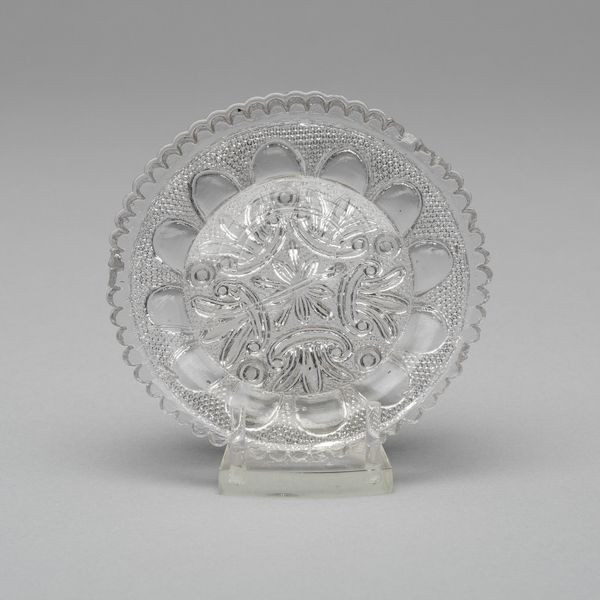
glass
#
glass
#
decorative-art
Dimensions: diam. 8.6 cm (3 3/8 in.)
Copyright: Public Domain
Editor: This delicate "Cup Plate," dating from 1830 to 1835, resides here at the Art Institute of Chicago. Its anonymous maker crafted it from glass. I’m struck by the intricate, almost lace-like patterns pressed into its surface. It feels almost too precious for everyday use! What can you tell me about this object? Curator: The "cup plate" as an object offers us a glimpse into early 19th-century social rituals surrounding tea and coffee consumption. Etiquette dictated that one shouldn't drink from a hot cup but pour the beverage into a saucer to cool. The cup plate prevented spills and protected surfaces. But consider this: does the craftsmanship elevate its status beyond mere utility? Editor: That's fascinating. So it's functionality informed its design, even at the cost of simplicity. Does its aesthetic quality tie into a particular socio-economic group or aspiration at the time? Curator: Absolutely! The pressed glass manufacturing process made items like this more affordable. Did it democratize access to refined homewares? The abundance of similar glass objects speaks to new industrial manufacturing, mass marketing and distribution to broader audiences who sought to emulate upper class conventions of leisure and consumption. Are there modern day objects you would compare to it in terms of intended consumer base? Editor: Perhaps something like mass produced furniture intended to mirror more expensive, handcrafted goods? It's like access to something once out of reach, even if it’s a copy. I see this plate in a new light now – it isn’t just decorative; it tells a bigger story about social mobility! Curator: Precisely. The value and accessibility of functional pieces like this reflect both artistic trends and larger cultural shifts of the era. I now think I have new questions about my assumptions.
Comments
No comments
Be the first to comment and join the conversation on the ultimate creative platform.
